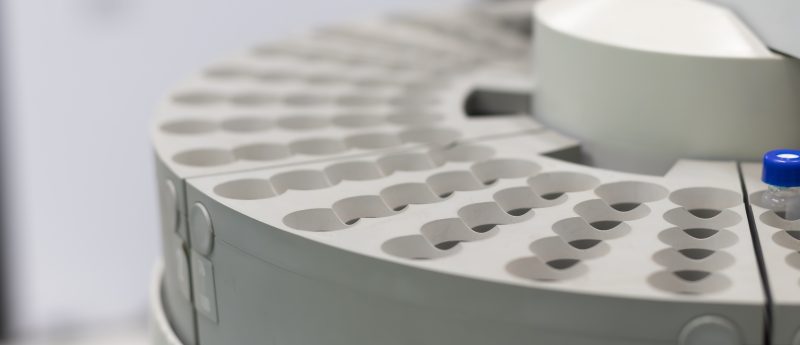Webinar Q&A follow up: ‘How to start your hybrid journey: LBA-LC/MS for large molecule quantitation’

Thank you everyone who attended the live webinar: ‘How to start your hybrid journey: LBA-LC/MS for large molecule quantitation‘. Below are responses to the questions posed during the live event that we did not have time to answer. We hope this is a useful resource and thank our webinar attendees and our speakers, Gary Impey (SCIEX) and Jean-Nicholas Mess (Algorithme Pharma) for their time.
Q&A follow-up
1. Can Tecan do the same job?
Essentially any liquid handler can automate sample preparation strategies. The difference here is that we’ve developed the entire protocol for the customer to be up and running immediately. The entire sample preparation workflow & protocol for the BioBA kits comes with the Biomek FX platform, which can all be provided directly through SCIEX.
2. Is the 0.5% DMSO in mobile phase A and/or B?
The supercharger is added in mobile phase B.
3. When were the detergents removed and how efficiently were they removed?
The detergents are added in the binding and in the strong wash steps. They are removed in the second wash step, which is typically with PBS only.
4. What extra steps would you recommend for larger molecules (e.g. 100kDa)?
Usually, larger proteins are digested to peptides before LC-MS based quantification. In the case of hybrid LBA-LC/MS assays, the digestion step typically occurs following the immunocapture of the analyte. It is also possible to perform a whole plasma/serum digestion and use a specific anti-peptide antibody for the immunocapture step.
5. What is the explanation of the impact of DMSO on MS signal?
Good question. The mechanism of supercharging is still debated. It was proposed that the superchargers, due to their low volatility, increase the surface tension of the droplet which translates in proportional charge availability. Protein conformational change inside the droplets due to the presence of superchargers might also be involved in the process.
6. Was the LC UHPLC, mciro LC or nano LC?
The teriparatide assay is conducted in the analytical flow regime. The flow rate is 300 µL/min and the column is a C18 (50×2.1 mm) with 3.5µ particle.
7. How does this assay perform compared to standard trypsin-based bottom-up approaches?
Trypsin-based bottom-up approaches would be difficult to apply in this case since teriparatide is a recombinant version of the 1-34 fragment of human parathyroid hormone (hPTH). In other words, teriparatide sequence is identical to hPTH N-terminal (residues 1 to 34). The only specific tryptic peptide of teriparatide would be at its C-terminal. However, this peptide is flanked at its N-terminal by a RKK cleavage site which is suboptimal and might lead to miscleavages.
8. What is the mass difference of your IS from analyte and what resolutions do you use on the quadrupole?
The internal standard has a D8 labeled valine residue (+8 Da). The quadrupoles are calibrated in unit resolution. During method development and validation, it was ensured that the contribution of the drug to the internal standard, and vice-versa, was kept within acceptable limits.
9. Are the Q1 and Q3 masses monostopic?
The Q1 and Q3 masses were set on the average m/z of teriparatide [M+7H]7+ (at Q1) and y32(6+) product ion at Q3.
The webinar is available here – How to start your hybrid journey: LBA-LC/MS for large molecule quantitation.





